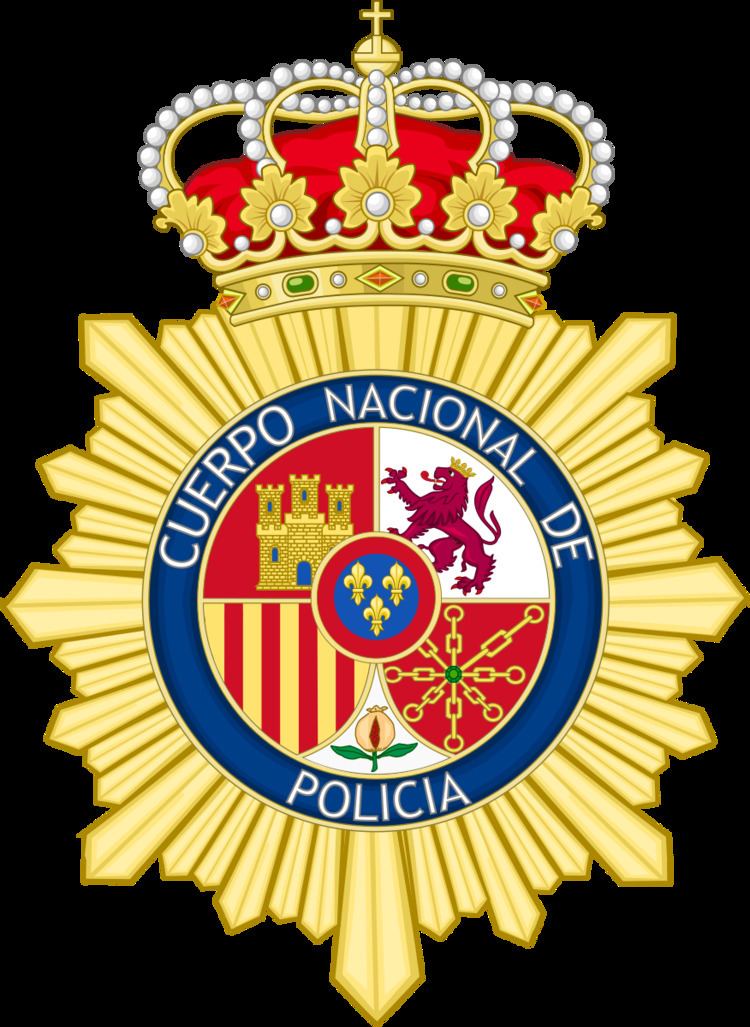Common name Policía Nacional Formed March 13, 1986 | Abbreviation CNP | |
 | ||
Motto Ley y Orden
Law and Order Preceding agencies Cuerpo Superior de Policía
Cuerpo de Policía Nacional Legal personality Governmental: Government agency | ||
History
The 1986 organic law unifying the separate uniformed and plainclothes branches of the national police was a major reform that required a considerable period of time to be brought into full effect. The former plainclothes service, known as the Superior de Policía (Higher Police Force), but often referred to as the "secret police" (former the General Police Service), consisted of some 9,000 officers. Prior to 1986, it had a supervisory and coordinating role in police operations, conducted domestic surveillance, collected intelligence, investigated major crimes, issued identity documents, and carried out liaison with foreign police forces.
Contents
- History
- Duties
- Requirements
- Competitive examination
- Training academy
- Ranks
- Specialist units
- Nicknames
- References
The uniformed service, the old Armed Police which became the National Police in 1979, was a completely separate organization with a complement of about 50,000 officers, including a small number of female recruits who were first accepted for training in 1984. The Director General of the National Police Force, a senior official of the Ministry of Interior, commanded 13 regional headquarters, 50 provincial offices, and about 190 municipal police stations. In the nine largest cities, several district police stations served separate sections of the city. The chief of police of each station was in command of both the uniformed and the plainclothes officers attached to the station. A centrally controlled Special Operations Group (Grupo Especial de Operaciones—GEO) was an elite fighting unit trained to deal with terrorist and hostage situations.
The principal weapons regularly used by the uniformed police were 9mm pistols, 9mm submachine guns, CETME and NATO 7.62mm rifles, and various forms of riot equipment. Their original uniform consisted of light brown trousers and dark brown jackets.
The initial training phase for recruits to the National Police Force was nine months, followed by a year of practical training. Promotions to corporal, sergeant, and sergeant major were based on seniority, additional training, and performance. In the Franco era, most police officers were seconded from the army. Under a 1978 law, future police officers were to receive separate training, and army officers detailed to the police were to be permanently transferred. By 1986 only 170 army officers remained in the National Police Force. Under the 1986 organic law, military-type training for police was to be terminated, and all candidate officers were to attend the Higher Police School at Ávila, which previously had served as the three-year training center for the Higher Police Force. The ranks of the plainclothes corps—commissioners, subcommissioners, and inspectors of first, second, and third class—were to be assimilated into the ranking system of the uniformed police—colonel, lieutenant colonel, major, captain, and lieutenant. Two lower categories—subinspection and basic—would include all nonofficer uniformed personnel. The newly unified National Police Corps was to be responsible for issuing identity cards and passports, as well as for immigration and deportation controls, refugees, extradition, deportation, gambling controls, drugs, and supervision of private security forces.
Franco's Policía Armada had once been dreaded as one of the most familiar symbols of the regime's oppressiveness. During the 1980s, however, the police underwent an internal transformation process, being brought to adopt the new democratic spirit of the times. The police supported the legally constituted government during the 1981 coup attempt. Led by the new police trade union, the police demonstrated in 1985 against right-wing militants in their ranks and cooperated in efforts to punish misconduct and abuses of civil rights by individual officers.
Duties
Duties are regulated by the Organic law 2/1986 of March 13, 1986.
- The issuing of identity documents - ID cards and passports.
- To control receipts and outgoings of the foreign people and Spaniards.
- Immigration law, refuge and asylum, extradition and expulsion.
- Gambling enforcement
- Drug enforcement
- Collaboration with Interpol and Europol.
- Control of private security companies
- General law enforcement and criminal investigation.
Requirements
Basic Scale:
Executive Scale:
Competitive examination
The applicant can choose between a Basic Scale career or an Executive Scale career. Applicants must pass the following basic tests before starting the academy:
Training academy
If the applicant has been chosen, they will receive professional training in Ávila's police academy for six months. Whilst trainees reside at the academy, they learn about Spanish law, receive firearms and self-defense training, conduct practical application exercises, learn the basics of the English language and undergo training in crime investigation. After that, the applicant will have the aula práctica, that mixes theoretical knowledge with practical situations for three months. Finally, the pupil will receive a policing practice, in which there will be various common situations that will form him as an agent.
Ranks
From 1979 to 1986 the Police sported a military rank system, a holdover of the old Armed Police.
Above the cadet ranks (there are five cadet ranks), the current ranks are:
Specialist units
There are numerous specialist units:
Nicknames
An earlier uniform was brown, leading to the nickname la madera/los maderos ("the wood"/"the logs"). They are also called la pasma. Among supporters of the violent Basque terrorist organization ETA, Policía Nacional are colloquially referred to as txakurrak (Basque for "the dogs").
